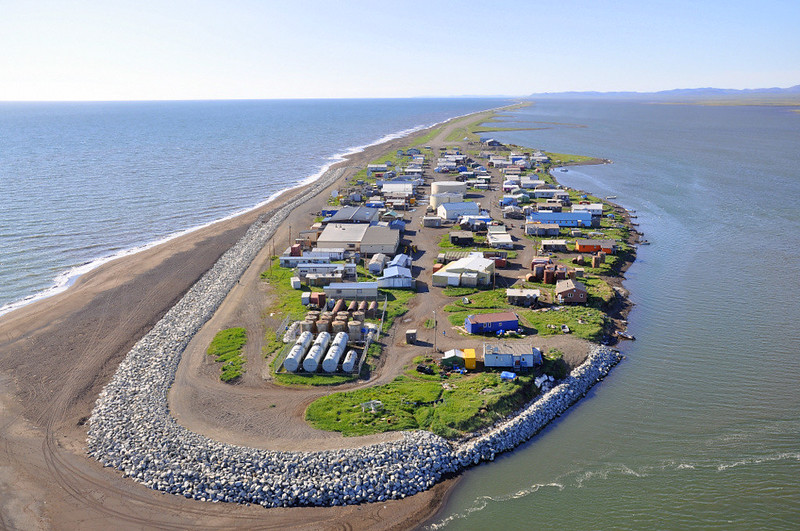Excerpt:
For low-lying islands like Kivalina, climate change poses an existential threat.
For years, Kivalina has been cited—like the Maldives, in the Indian Ocean, or the island nation of Tuvalu, in the Pacific—as an example of the existential threat posed to low-lying islands by climate change. In the past two decades, stormwaters have overtopped Kivalina at least once, threatening lives and infrastructure. In 2003, the Government Accountability Office reviewed nine Alaskan villages and identified Kivalina as one of four in “imminent danger.” (Of those four, only one, Newtok, a Yupik village near the Bering Sea, has been able to move some of its residents.) A more recent report designated Kivalina as one of seventy-three Alaska Native villages threatened with destruction because of erosion, flooding, and permafrost degradation. On a visit to the state in 2015, President Barack Obama flew over Kivalina and posted a photograph of the island on social media from the air. “There aren’t many other places in America that have to deal with questions of relocation right now,” Obama wrote, “but there will be.” He described what was happening in the village as “America’s wake-up call.”
Seven years later, Kivalina’s move is still mostly in the future, even though the island continues to lose ground. Building housing is an expensive and laborious process in the remote Arctic, and no single federal agency is responsible for relocating communities facing environmental threats. After more than a decade of navigating government bureaucracies, tribal members successfully lobbied for the construction of a bridge from Kivalina to the mainland. Its completion, in 2021, created a vital evacuation route where once the only possibility of escape was by water or air. The bridge is part of an eight-mile road that zigzags across the tundra, which is covered in snow in winter and prone to flooding in spring and fall. It ends at the foot of a large hill, where a newly constructed school forms the heart of the future village. More years are likely to pass before homes are built there, even as engineers predicted, in 2013, that Kivalina will be fully under water by 2025. The new site is a desolate and rocky place, but, at an elevation of a hundred and twenty-five feet, it is a safe distance from Kivalina’s receding beach and eroding riverbanks. Until the community can move inland, residents live with the worry that the right storm at the right moment could wipe out everything…









